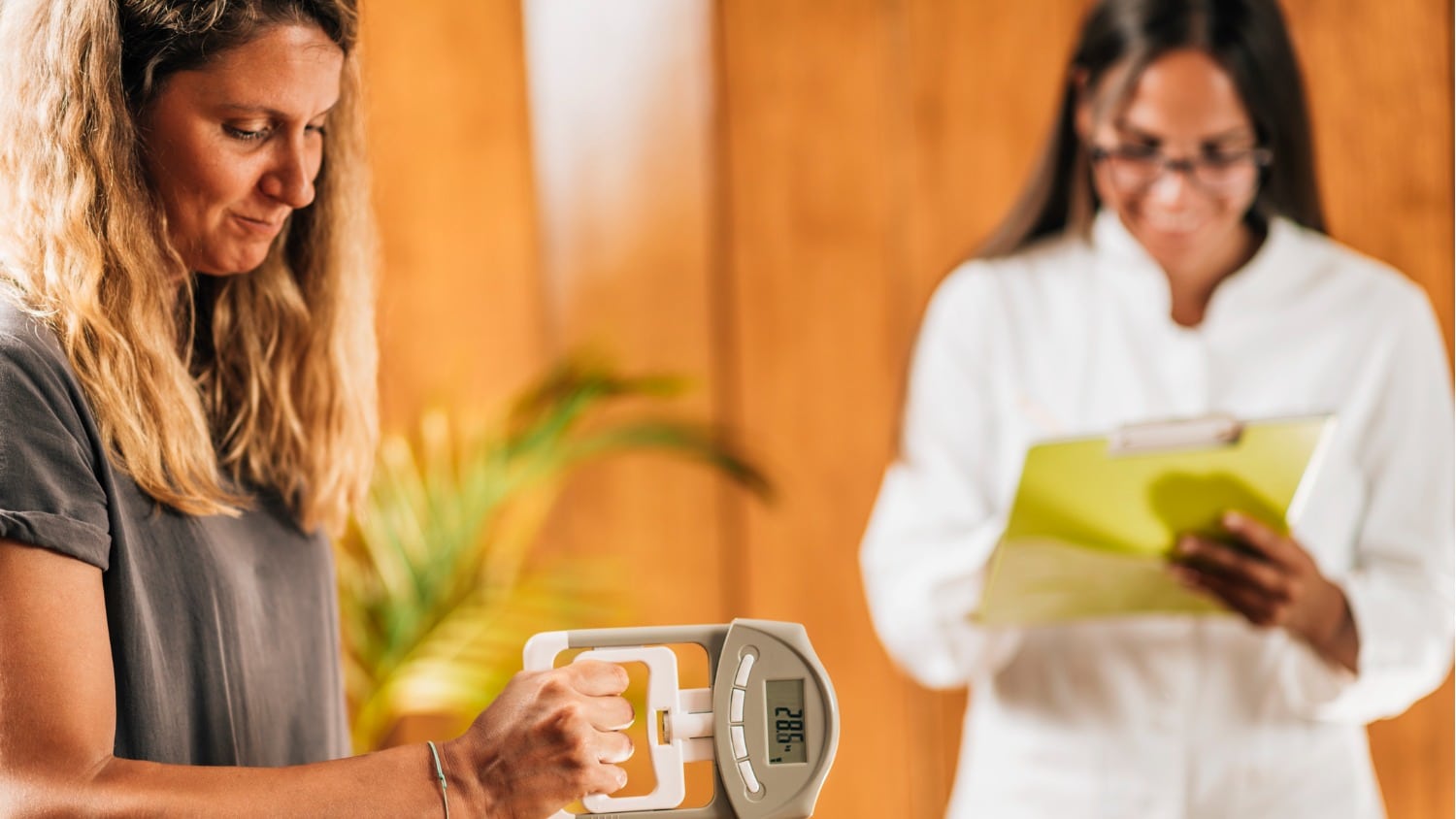
Have You Heard of the Handgrip Dynamometer Strength Test? It Can Influence Your Future!
Throughout our lives we participate in various health/medical screenings to see if we have, or are at risk for developing, certain health conditions or diseases. We participate in screenings for our blood pressure, glucose levels, cholesterol values, body weight and composition, eyesight, posture, etc.
As we age, there seems to be an increasing number of recommended screenings such a colonoscopy or mammogram, to name but a few. These screenings not only identify risk for or the presence of disease but increase our own relevant awareness of our state of wellness.
More importantly, important health test values should serve as powerful intrinsic motivators to cause us to act in meaningful ways to reduce our risk or achieve a level of control of a health condition.
Have You Heard of the Handgrip Dynamometer Strength Test?

A screening that most individuals have not heard about or participated in is the handgrip dynamometer strength test.
The test simply requires that a person squeeze, with as much force as possible, a handle type devise (see below) that measures pounds or kilograms of force they produce with their grip.
The unique and important thing about a handgrip dynamometer strength test is that multiple studies have validated its use as a simple, reliable, and inexpensive assessment of overall strength and a valid future predictor of physical disability, mobility limitation, and certain diseases.
What Does the Research Actually Show?
- Because the pull of a muscle on its attachment to a bone stimulates the laying down of bony matrix, producing a thicker and more dense bone, muscle strength is related to bone mineral density. Consequently, a systemic review of literature has confirmed a relationship between decreased grip strength and the increased incidence of hip fractures.
- Weak grip strength has shown to be a strong predictor of all-cause mortality in community-dwelling populations.
- A reduction in grip strength is a significant predictor of cardiovascular mortality for men and women.
- For individuals admitted to a hospital with chronic obstructive pulmonary disease, there was a significant difference in mean grip strength between patients admitted to the intensive care who died compared to those who survived.
- Low grip strength in mid-life is a strong predictor of mobility and personal care disability in early old age.
- The risk of falling over a period of one year is significantly greater among both men and women whose grip strength is below the 25th percentile.
- The association between grip strength and the combined rate of hospital admission/death over a 10-year follow up period was examined showing a significantly greater risk of any emergency admission/death with individuals with low grip strength.
Several researchers evaluating the effect of grip strength on a variety of health outcomes recommend that grip strength measures are a “useful indicator of overall health” and as a biomarker of health status.
Further, they state that there is “adequate evidence to support the use of grip strength as an explanatory or predictive biomarker of specific outcomes such as generalized strength and function, bone mineral density, fractures, falls, nutritional status, disease status and comorbidity load, cognition, depression, and sleep, hospital-related variables and mortality”.
Considering the predictive ability of this simple test, hand grip dynamometry measured strength should be considered as a vital sign, useful for screening middle-aged and older adults, and the data presented as a motivational stimulus to help at risk individuals begin or increase a strength training program for a future greater quality of life.
Where Are Handgrip Dynamometry and Other Strength and Balance Tests Administered and Appropriate Intervention Follow-up Provided
One organization is the American Physical Therapy Association. It has developed a preventive care program titled Annual Physical Therapy Visit. This initiative is designed to optimize movement and promote health, wellness, and fitness by allowing physical therapists to perform screening of elderly individuals to identify health risks and determine appropriate recommendations.
The screening consists of:
- An interview with assessment of physical activity, smoking and alcohol use, nutrition, sleep, health history, social determinants of health.
- Resting vitals – heart rate, blood pressure, pulse oximetry.
- Movement screen evaluating how participants move, if movements provoke symptoms, and identify impairments for further revaluation.
- Physical function tests including handgrip strength, static balance, gait speed, sit-to-stand performance.
- Consultation – the assessment results are used to identify fall risk, sarcopenia and frailty, deficits in function, need for physical activity plan, cardiovascular concerns, and social determinants of heath.
- Referral Protocol – based on the results of the Annual Physical Therapy Visit screening and a well-designed rubric, appropriate referral can be made for physical therapy intervention, referral to another healthcare provider (physician, social worker, occupational therapist, nutritionist, smoking cessation program, cardiac or pulmonary rehabilitation), or community program (YMCA, Fit for Life, Local fitness clubs/organizations, CrossFit, Silver Sneakers, etc.).
Bottom Line
If a person does not know if they have a risk factor (e.g., high blood cholesterol), they are unlikely to engage in an intervention to reduce that risk factor.
Because a low handgrip strength score is consistently associated with a greater likelihood of premature mortality, the development of disability, an increased risk of complications for prolonged length of stay after hospitalization or surgery, and certain diseases, why not consider getting your handgrip strength tested by a local physical therapist or other professional trained in administration of the test and follow up interventions?
Transitioning into or experiencing older age can be more enjoyable, meaningful, and of a greater quality with a body that has the strength and mobility to allow you to go and do with more vigor and capability.
Whether or not you have a handgrip dynamometer strength test, I hope you can see that the benefits that can come from resistance training are many. And the really cool thing is that it is never too late to start a strength training program. When will you begin yours?
Let’s Have a Conversation:
When was the last time you went for a medical screening? What was the screening about? Have you heard of the handgrip dynamometer strength test? What do you think this screening will show for you?






